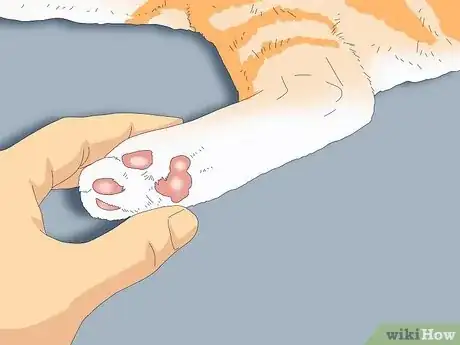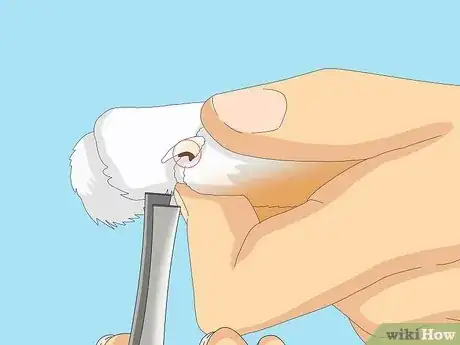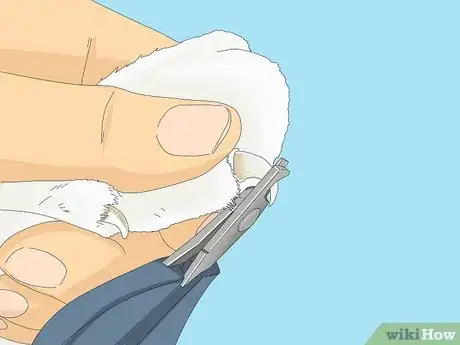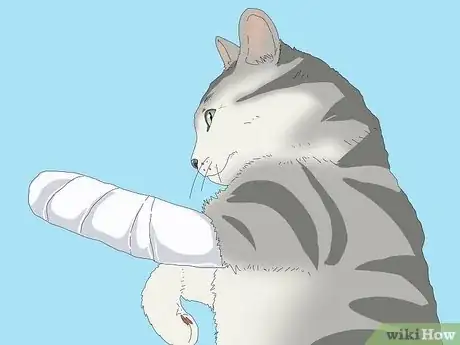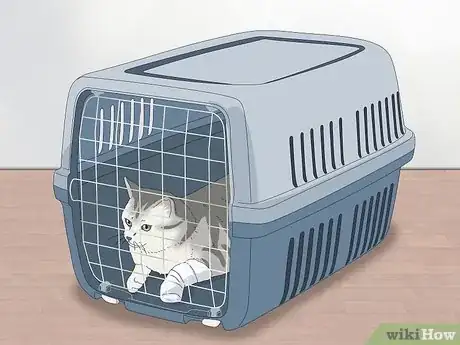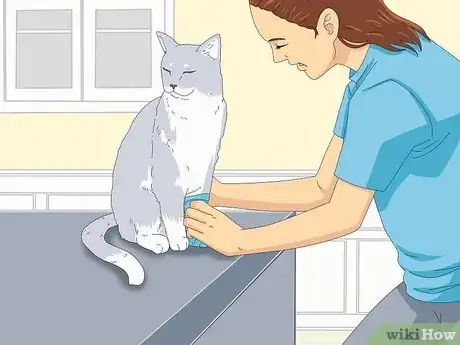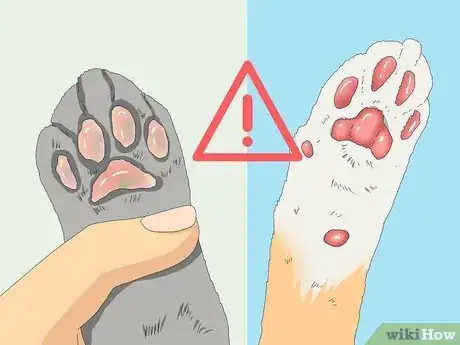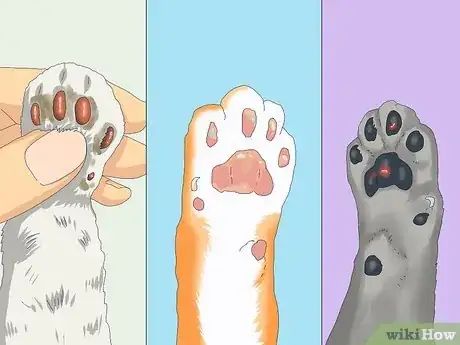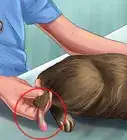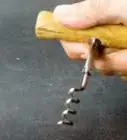This article was co-authored by Lauren Baker, DVM, PhD and by wikiHow staff writer, Amber Crain. Dr. Baker is a Veterinarian and PhD candidate in Comparative Biomedical Sciences. Dr. Baker received her Doctor of Veterinary Medicine from the University of Wisconsin in 2016, and went on to pursue a PhD through her work in the Comparative Orthopaedic Research Laboratory.
There are 8 references cited in this article, which can be found at the bottom of the page.
This article has been viewed 56,768 times.
If your beloved cat is suddenly limping, you're probably wondering what to do next. Take a deep breath—we're here to help. The most common causes of limping are minor issues that you can easily treat at home, and we'll tell you exactly how to do that. We'll also talk about situations that require a veterinarian and which associated symptoms may require emergency intervention. If you're ready to get your cat on the road to recovery, scroll down.
Things You Should Know
- Examine your cat’s legs and paws. If you don’t see anything, brush your fingers over the fur to feel for wounds or swelling.
- Remove debris, glass, or splinters with tweezers. Then, wash the paw with warm water and soap.
- Clean and bandage minor wounds. If the cut is bleeding, apply pressure with a clean cloth for 10-15 minutes.
- Take your cat to a vet if you notice a dangling limb, a bone sticking out, or discharge coming from a wound.
Steps
References
- ↑ https://www.modestovethospital.com/site/blog/2021/10/01/cat-limping
- ↑ https://vcahospitals.com/know-your-pet/first-aid-for-torn-footpads-in-cats
- ↑ https://www.modestovethospital.com/site/blog/2021/10/01/cat-limping
- ↑ https://vcahospitals.com/know-your-pet/first-aid-for-torn-footpads-in-cats
- ↑ https://www.modestovethospital.com/site/blog/2021/10/01/cat-limping
- ↑ https://www.pdsa.org.uk/pet-help-and-advice/pet-health-hub/symptoms/limping-and-stiffness-in-cats
- ↑ https://www.pdsa.org.uk/pet-help-and-advice/pet-health-hub/symptoms/limping-and-stiffness-in-cats
- ↑ https://vcahospitals.com/know-your-pet/wounds-fight-wound-infections-in-cats
- ↑ https://www.pdsa.org.uk/pet-help-and-advice/pet-health-hub/symptoms/limping-and-stiffness-in-cats
About This Article
To treat a limping cat, start by wiping any debris on its paw with a damp cloth, or using tweezers to remove things, like splinters. If your cat has a torn nail, cut it using pet nail clippers to relieve the pain. Alternatively, apply pressure to its leg with a clean cloth, and put a bandage on the wound. Make sure you take your cat to your vet for more serious injuries, like broken bones or an infected wound, which will appear red or swollen. For tips on how to identify arthritis in your cat, keep reading!
